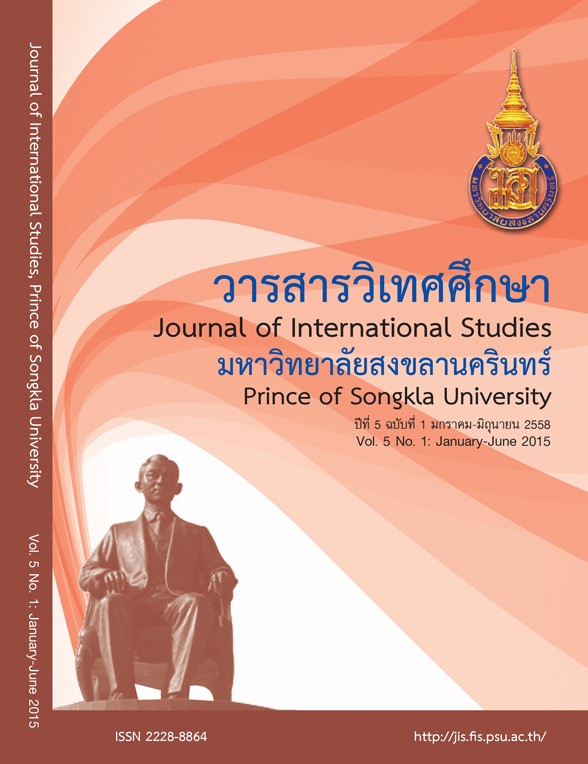Voice Recognition for English Pronunciation Practice: A Case Study of Siri in iPad
Main Article Content
Abstract
Voice recognition has proven potential in the teaching of English pronunciation. Many tools have been developed specifically for this purpose; however, such tools are neither available in normal language classrooms nor students’ self-practice. The present study tested the possibility of using the Siri voice recognition in the iPad as a tool for pronunciation practice for the reason that Apple products are owned by many Thai University students, who are our target group. We compared the accuracy of voice recognition when used by a native and a non-native speakers of English. The corpus data was on three levels: word, phrase, and sentence. The Chi-square test was used to test differences of accuracy between the native and the non-native speakers in the corpus. The differences between three assessments of voice recognition were measured between the two speakers. Results showed that Siri could recognize utterances spoken by the native speaker significantly differently to those spoken by non-native speaker for word (p<0.05), phrase (p<0.05), and sentence (p<0.05). No significant difference between the three assessments was found within both speakers. Among all corpus tested, the least correctness was detected at sentence level, which differed significantly to word and phrase levels (49.7% of native speaker (p<0.001) and 16% of non-native speaker (p<0.001)). This proved that correct pronunciation was essential to be recognized by the application. We conclude that the voice recognition application in Apple products has the potential to be used for pronunciation practice in students’ self-study scheme.
Article Details
Statements and opinions expressed in articles herein are those of the authors and do not necessarily reflect the position of the editors or publisher.
Article, information, text, image, etc. which are published in Journal of International Studies, belong to Journal of International Studies. If anybody or any organization would like to use part or whole of them, they must receive written permission from Journal of International Studies before usage.
References
Methodologies and Challenges-A Review. International Journal
of Advance Research in Computer Science. 2(6), 326-331.
Fromkin et al. (2007). Introduction to Language. Thomson Higher
Education. Boston.
Geller, T. (2012). Talking to Machines. Communications of the ACM.
55(4), 14-16.
Junqua, J. (1999). Speech recognition and teaching apparatus able
to rapidly adapt to difficult speech of children and foreign
speakers. U.S. Patent No. 6, 253,181. 26 Jun. 2001.
Kamkhien, A. (2010). Thai Learners’ English Pronunciation
Competence: Lesson Learned from Word Stress Assignment.
Journal of Language Teaching and Research. 1(6), 757-764.
Kanokpermpoon, M. (2007). Thai and English Consonantal Sounds:
A Problem or a Potential for EFL Learning?. ABAC Journal. 27(1),
57-66.
Kawai,G. and Hirose, K. (2000). Teaching the pronunciation of
Japanese double-mora phonemes using speech recognition
technology. Speech Communication. pp.131-143.
Pongprairat, R. (2011). A Study of Interlanguage English Intonation in
Thai Learners, and the Degree of Intelligibility and Comprehen
sibility in Native Speakers’ Judgments. (Doctoral dissertation,
English as an International Program). Chulalongkorn University.
Bangkok.
Witt, S. and Young, S. (1998). Performance Measures for Phone-
Level Pronunciation Teaching in CALL. Proc. of the Workshop on
Speech Technology in Language Learning, pp. 99-102,
Marholmen, Sweden.


